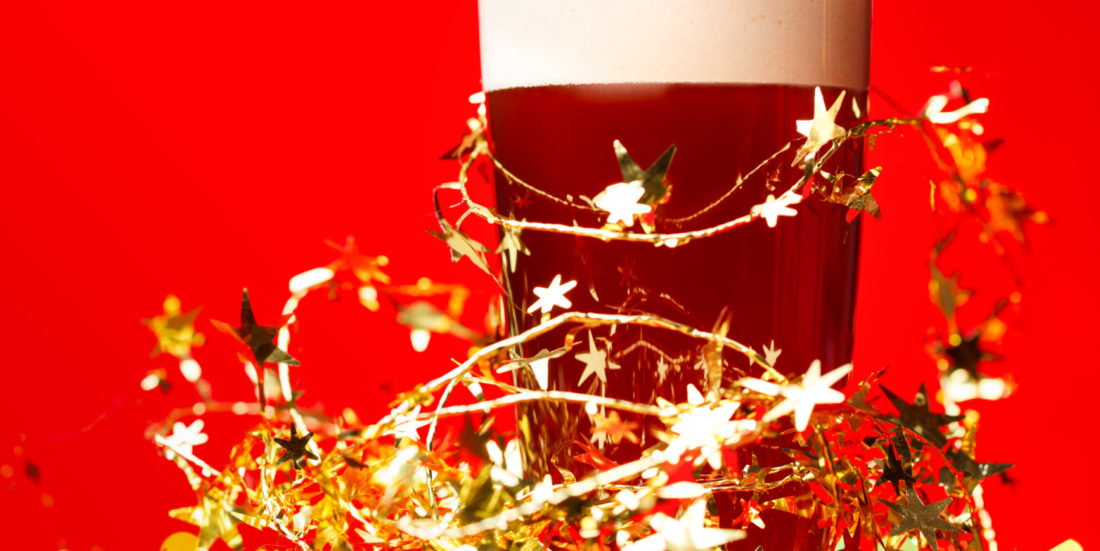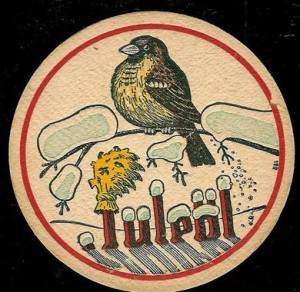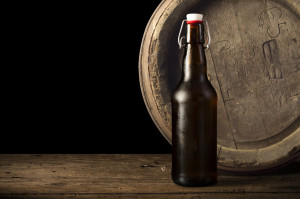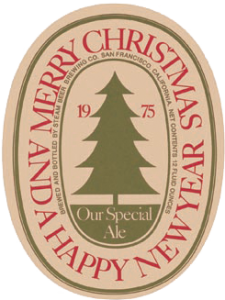Norway’s long tradition of brewing Christmas beer
Norwegian breweries have been producing commercial Christmas beer over the last several centuries. Today’s variety of craft-brewed Christmas beers are among the most important for Norwegian breweries, says NTNU beer enthusiast Anders Christensen.
Anders Christensen is chief engineer at NTNU’s Department of Computer and Information Science who also happens to be fascinated with the history of beer in Norway. He’s become something of a self-taught expert on the subject, which he writes about on his blog in Norwegian, “Det står en-og-førti øl…” (There were forty-one beers…). He sat down some time ago with Gemini journalist Anne Sliper Midling to record his accounting of the last two centuries of brewing Christmas beer in Norway. We liked this story so much we’re republishing it for you again.
What follows is an excerpt of his take on this history. If you want to practice your Norwegian, you can listen to his recording on Soundcloud. Otherwise, skål, as we say in Norway, drink up!
An old tradition made new again
The brewing of Christmas beer in Norway is a very old tradition and dates back to pre-Christian times, at least.
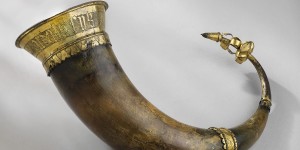
A drinking horn from the Middle Ages, with brass fittings around the opening and an inscription that reads: ihecus. iacpar. melchior. baltazar. Photo: Åge Hojem, NTNU University Museum
Much has been said and written about Christmas beer in ancient times, so the focus here is on commercially brewed Christmas beer from the last few hundred years.
The Norwegian brewery industry went through a tremendous upheaval in the early 1800s. In the 1700s, home brewing, farmstead brewing and craft brewing were producing more or less the same product.
But by the mid-1800s these were all about to be displaced by commercial brewing at a large scale and by drinking habits that shifted more towards hard liquor.
The first commercial advertisements for Christmas beer came in the 1860s and 1870s. Before this time, there had certainly been advertisements for extra good beer for Christmas, much as a number of other items were promoted in advance of Christmas, especially food and drink. But this beer was not presented as “Christmas beer”.
The first newspaper ad I’ve found for something called “Christmas beer” was in the Bergen Adressecontoir Efterretninger of 1 December 1869.
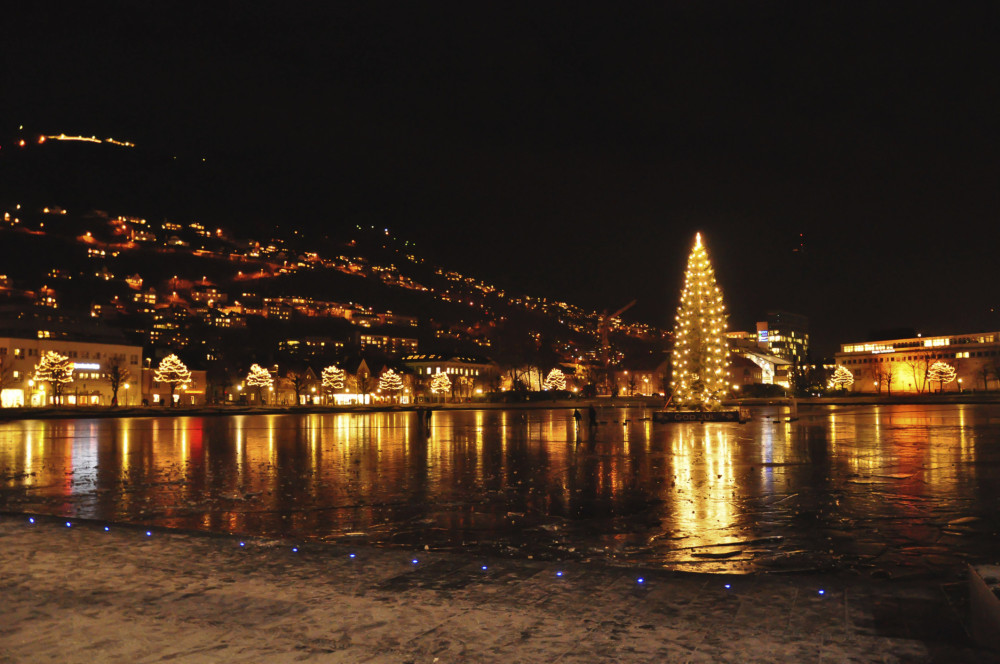
Bergen was home to one of the first advertisements for Christmas beer, published in 1869. Photo: Thinkstock
The ad read: “Extra fine Christmas beer in tønder and ankervis available, and can be ordered from C. Andersen, Dræggen.” “Ankervis” means that the beer was in a wooden barrel, called an anker, which contained 38.6 litres. The brewer is likely Carl Johan Andersen, born in 1839, who was registered as a beer brewer in 1875 and by 1881 as a beer dealer. He was likely a small craft brewer who also took orders, and who may have also resold beer from other brewers. But Andersen was overtaken by industrial breweries, and the last mention of him lists his occupation as a fishmonger.
- You might also like: Secrets of a traditional Norwegian Christmas sausage
Rich and sweet, but not very strong
By the end of the 1800s, Christmas beer was mainly something called “pottøl” (literally, pot beer) or “søttøl” (sweet beer). It was a rich, sweet but relatively weak beer.
Pottøl was a remnant of the old beer brewing tradition that dated from before the Bavarian type of bottom fermentation was adopted in Norway. At the same time, it was also a kind of precursor for landsøl (a lager) and vørterøl (a malt beer).
Pottøl and søttøl were supposed to be sweet, good and rich, designed to go with Christmas food. Even industry breweries, which mainly brewed with bottom yeast, brewed pottøl. For Christmas in 1877, for example, Aass Brewery in Drammen brewed a beer they called Christmas beer and described as an “extremely good, malt-rich sweet beer.”
A few years later the Christiania Brewery advertised an “inexpensive Christmas beer,” which they described as: “A tasty household beer, which is very malt-rich and stronger than the normal pottøl.” It could be purchased in bottles or in barrels of approximately 40 or 80 liters.
This advertisement represents what could then be described as the Christmas beer of the time. It was not so much that it was a specific kind of beer, but more that it was a better, sweeter, richer and happily stronger variation of an everyday beer, for use in food and with food for Christmas. If the price is any indicator, the beer’s alcohol content was probably around 2.3%.

Maridalsveien 3 in Oslo, home to the first Christiania Brewery, now home to the Oslo City Archives. Photo: Chris Nyborg/ Lokalhistoriewiki.no
Christiania Acti Beer Brewery advertised a Christmas beer in 1881 which they called a sweet beer (“sødtøl“) and described as a light, tasty Christmas beer. At the same time, they advertised a bock beer, which they described as very strong and malt rich. The sødtøl was half the price of the bock beer.
- You might also like: Book detectives solve mysteries of yesteryear
An interwar beer cartel
It is only during the interwar years that Christmas beer becomes more common. In the 1930s Norway’s breweries divvied up the country among themselves. Every brewery was basically given a monopoly in their own surrounding areas through a cartel system administered by the Brewery Association.
They did this not only to limit destructive competition, but also so they could present a common front to the temperance movement and eventually to the possibility of nationalizing the production, distribution and sale of beer.
One consequence of of the cartel’s activities was that breweries delivered the same standardized commodity. People tried to eliminate the differences between breweries, beers, prices, sales times, recipes and so on.
Christmas beer was also standardized. At the same time, the 1930s were a creative period for the advertising industry, and Christmas beer advertising began to take off.
- You might also like: Ancient Trønder people carved exceptional petroglyphs
No Christmas beer during WWII
During the Second World War, when Norway was occupied by Nazi Germany, brewers did not produce Christmas beer—they simply didn’t have the resources. All beers became weaker, thinner and it became a real challenge to find raw materials for brewing.
Yet even after the war, breweries did not produce Christmas beer. The Norwegian Brewery Association did not want to provoke the temperance movement and the government into introducing beer rationing by brewing a luxurious and resource-intensive Christmas beer.
In fact, it wasn’t until 1956 that Christmas beer was brewed again in Norway. It says something bout the iron grip the Brewery Association had on breweries that not one Norwegian brewery deviated from this. And when Christmas beer came back on the market, all the breweries sold the same beer, in the same bottles with the same price, with all sales starting on November 29 and ending on January 15.
However, Christmas beer had actually been on the market a couple of years already, incognito. Breweries were initially subject to strong import restrictions on raw materials.
But then they started to brew beer for export, and importing expensive barley grains to brew this beer made sense, because it brought hard currency to Norway. These light and dark export beers, sold after the war, were actually reincarnations of a spring beer and Christmas beer from the interwar years.
Strong beers return
The next important change for Christmas beer was in the mid-1990s. At this time, the sale of beer with an alcohol content between 4.7 and 7.0% was transferred to the state-owned wine and liquor monopoly, the Vinmonopolet, and within a few years the sales of these beers dropped to a twentieth of what they had been.
But this guaranteed that Norwegians could buy Christmas beer in the supermarkets with a alcohol content of 4.7% ,in addition to the older style of Christmas beer, which was at 6.5%. A few years later the government lifted the upper limit for alcohol content in beer. It had been 7% for many years. This led Norwegian breweries to experiment with stronger beers, and Norwegian beer drinkers were able to buy Christmas bock beer, made from a double bock beer.
In the meantime there have been two things that would have great significance for Christmas beer: In the mid-1970s the Norwegian government introduced a ban on advertising for alcohol and the cartel system collapsed in the 1980s, making for true competition between the breweries.
A perfect storm for Christmas beer
Without the possibility of open advertising, breweries had to be sneaky with their advertising. The Norwegian beer industry was called a “dark market”—a market where you had to market your product without direct advertising.
This created a kind of perfect storm for Christmas beer: A seasonal beer in a competitive market without advertising. Combine this with the newspapers’ interest in consumables and the Vinmonopolet’s policy of equal price and availability throughout Norway, and you get Christmas beer tests, and Christmas beer becomes a
prestige product for breweries.
With Norway’s microbrewery revolution the country has gained a wealth of new small breweries, all of which typically have at least two Christmas beers, one in the supermarkets and one in the Vinmonopolet. Christmas beer is actually one of the most important beers a brewery produces, if not in monetary sales, then in the implicit marketing.
It’s commonly believed that Norway’s micro-breweries have taken their lead from the profusion of US breweries. There is certainly some truth in this, but traditions can also go the other way.
One of the earliest Christmas beers brewed in the US was Anchor Christmas Ale, which has been brewed every year since 1975.
This beer has directly and indirectly has inspired numerous other US breweries to make Christmas beer. But Anchor’s motivation was supposedly that they had heard of Norwegian Christmas beer traditions.
